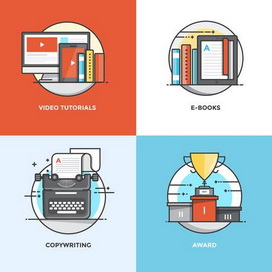Site menu
Section categories
| PORTABLE SOFTWARE |
| SOFTWARE |
| SARADADDY REPACK GAMES |
| PC GAMES |
| KIDS GAMES |
| VIDEO TUTORIALS |
| MOVIES |
| ANIMATED MOVIES |
| e-BOOKS |
| Hidden Object Games |
| Dash / Time Management |
| Casino Games |
| MAHJONG |
Statistics
Total online: 1
Guests: 1
Users: 0

PC Games List
Portable Software List
Kids Games List
VIDEO COURSES

TUTORIALS
1000+ e-BOOKS

1000+ MOVIES


Main » 2018 » April » 4 » Java Programming 5th edition
22:38:27 Java Programming 5th edition |
Java Programming 5th edition  Size : 10 Mb Author : Joyce Farrell Java Programming, Fifth Edition provides the beginning programmer with a guide to developing applications using the Java programming language. Java is popular among professional programmers because it can be used to build visually interesting graphical user interface (GUI) and Web-based applications. Java also provides an excellent environment for the beginning programmer—a student quickly can build useful programs while learning the basics of structured and object-oriented programming techniques. This textbook assumes that you have little or no programming experience. This book provides a solid background in good object-oriented programming techniques and introduces object-oriented terminology using clear, familiar language. The writing is nontechnical and emphasizes good programming practices. The examples are business examples; they do not assume a mathematical background beyond high-school business math. In addition, the examples illustrate only one or two major points; they do not contain so many features that you become lost following irrelevant and extraneous details. The explanations in this textbook are written clearly in straightforward sentences so that native and non-native English speakers alike can master the programming concepts. Complete, working code examples appear frequently in each chapter; these examples help the student make the transition from the theoretical to the practical. The code presented in each chapter is also provided on disk, so that students can easily run the programs and experiment with changes to them. Java Programming, Fifth Edition presents Java programming concepts, enforcing good style, logical thinking, and the object-oriented paradigm. Objects are covered right from the beginning, earlier than in many other textbooks. You create your first Java program in Chapter 1. Chapters 2, 3, and 4 increase your understanding of how data, classes, objects, and methods interact in an object-oriented environment. Chapters 5 and 6 explore input and repetition structures, which are the backbone of programming logic and essential to creating useful programs in any language. You learn the special considerations of string and array manipulation in Chapters 7 and 8. Chapters 9, 10, and 11 thoroughly cover inheritance (the object-oriented concept that allows you to develop new objects quickly by adapting the features of existing ones) and exception handling (the object-oriented approach to handling errors). Both are important concepts in object-oriented design. Chapter 12 provides information on handling files so you can permanently store and retrieve program output. Chapters 13 and 14 introduce GUI Swing components—Java’s visually pleasing, user-friendly widgets—and their layout managers. Chapters 15 and 16 show you ways to provide interactive excitement using graphics, applets, images, and sound. In every chapter, Java Programming, Fifth Edition follows the text explanation with a "You Do It” section that contains step-by-step exercises to illustrate the concepts just learned, reinforcing the student’s understanding and allowing concepts to be better retained. Creating the programs in the step-by-step examples also provides students with a successful experience in the language; finishing the examples provides them with models for their own creations. The student using Java Programming, Fifth Edition builds applications from the bottom up, rather than starting with existing objects. This facilitates a deeper understanding of the concepts used in objectoriented programming, and engenders appreciation for the existing objects students use as their knowledge of the language advances. When students complete this book, they will know how to modify and create simple Java programs and will have the tools to create more complex examples. They also will have a fundamental knowledge of object-oriented programming, which will serve them well in advanced Java courses or in studying other object-oriented languages such as C++, C#, and Visual Basic. FEATURES Java Programming, Fifth Edition is a superior textbook because it also includes the following features : Objectives : Each chapter begins with a list of objectives so you know the topics that will be presented in the chapter. In addition to providing a quick reference to topics covered, this feature provides a useful study aid. Notes : These highlighted tips provide additional information—for example, an alternative method of performing a procedure, another term for a concept, background information on a technique, or a common error to avoid. Figures : Each chapter contains many figures. Code figures are most frequently 25 lines or less, illustrating one concept at a time. Frequently placed screen shots show exactly how program output appears. Callouts in more figures : Callouts have been added to many figures to help students focus on the points emphasized in the text. Some icons contain the words "Don’t Do It” to emphasize when an example illustrates a practice not to emulate. Color : The code figures in each chapter contain all Java keywords in brown. This helps students identify keywords more easily, distinguishing them from programmer-selected names. Files : The Student Disk holds more than 180 files that contain the code presented in the figures in each chapter. Students can run the code for themselves, view the output, and make changes to the code to observe the effects. Two Truths and a Lie : A new quiz reviews each chapter section, with answers provided. This quiz contains three statements from the preceding section of text—two statements are true and one is false. Over the years, students have requested answers to problems, but we have hesitated to distribute them in case instructors want to use problems as assignments or test questions. These true-false mini-quizzes provide students with immediate feedback as they read, without "giving away” answers to the existing multiple-choice and programming problem questions. You Do It : In each chapter, step-by-step exercises help the student create multiple working programs that emphasize the logic a programmer uses in choosing statements to include. This section provides a means for students to achieve success on their own—even those in online or distance learning classes. Don’t Do It : This section at the end of each chapter summarizes common mistakes and pitfalls that plague new programmers while learning the current topic. Check links with this FILEFACTORY LINK CHECKER  If links are dead, please leave comment in the post.  http://www.filefactory.com/file/1oj2ycm4zzvh/n/ |
|
|
| Total comments: 0 | |











